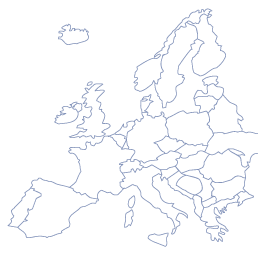The Manual
Cities and Regions.
Their Cultural Responsibility for Europe and How They Can Fulfil It
Given their key responsibility for culture, the cities and regions have an important role to play in European integration. That is why the ‘A Soul for Europe’ initiative – working together with the European Capital of Culture Ruhr 2010 project and leading experts and representatives from a wide variety of sectors – developed a manual designed to help the cities and regions assume their responsibility for Europe. The manual contains a host of information on the subject, along with scholarly articles and critical remarks, concrete examples and key questions, providing guidelines for action by the cities and regions.
To clarify the types of cultural projects that can have an impact at European level above and beyond the general goals and approaches outlined above, a classification into six categories has been developed, dividing the cultural spectrum into operational areas rather than areas of specialism. No one city or region will be equally strong in all of these areas, but each will make its contribution to Europe in more than one category. What makes a city or region a player at European level is, then, not just its cultural potential, it is the effectiveness with which it can activate that potential for strategic purposes. What counts is not what is available (i.e. cultural ‘substance’), or what is possible (i.e. cultural ‘potential’) but only what is effective in municipal and regional development.
The six categories in outline:
1 Outstanding cultural performance
This category is the most comprehensive, encompassing particularly striking contributions to Europe’s culture. What constitutes a city’s or region’s outstanding cultural performance? What do cities and regions do in order to utilize their cultural potential for their general development and consolidation?
Examples: Ferrara – from industrial output to cultural output, the Berlin Philharmonic
2 Lieux de Mémoire – Europe’s memory
This category includes places and objects that are part of a transnational, European memory and the way they are integrated into the cultural performance of a city or region. Some cities and regions boast sites (buildings, landscapes or topographic points) of European significance.
Examples: the Bastille, Auschwitz, the Brandenburg Gate
3 Cultural diversity
One of the cities’ and regions’ most important cultural achievements is integrating people from different cultures into their societies. This demonstrates respect for the traditional and modern, for what is local and what is foreign. Europe’s cultural diversity is one of its greatest assets: it shows how openness and tolerance can be instrumental in mastering the major challenges posed by the coexistence of different cultures. What we need to ask is: Where is cultural diversity practised and encouraged? How are people with different cultural backgrounds integrated into society?
Examples: Day of Dialogue in Rotterdam, Carnival of Cultures in Berlin, ‘district mothers’ in Neukölln
4 Conversion and urban renewal
This includes the transformation of individual locations into municipal districts and re-using buildings and civil infrastructure for new purposes. How are cities and regions mastering the necessary process of transition from an industrial to a knowledge-based society? An economic, technological, political and social process of conversion and urban renewal is under way that is having an impact on how cities and regions – and the people who live there – look. This process of fundamental structural change is altering the face of cities and regions. What is happening to no longer needed industrial buildings, to military facilities, to disused residential and school buildings? What sort of re-purposing can we expect?
Examples: Zollverein Colliery, Hamburg’s Warehouse District
5 Borderlands
This category includes the transformation of border areas into active interfaces for encounter and cultural exchange, regions where cross-border cooperation is an established tradition and new tasks at new borders. Sub-regions or sub-cities located close to borders are integrating to form new entities. Border crossing is possible and necessary, or at least desirable. Borderlands offer their citizens new opportunities and prospects. How are these used? How are new partnerships formed and new modes of everyday cooperation developed?
Examples: the German-Polish border town of Guben-Gubin, Luxembourg and the Grande Région, Vienna-Bratislava, the Baltic region
6 European cultural heritage
Cities and regions are European players by virtue of their cultural heritage. Europe’s cultural heritage – both physical and non-physical – takes a variety of forms: not only important buildings from different stylistic periods and characteristic landscapes but also general lifestyles, religions, regional practices, festivals, customs and traditions, languages, regional dialects, facial expressions and gestures and the cultivation of traditions and heritage.
Examples: Mostar Bridge, the Route of Brick Gothic, the Celtic peoples’ bagpipe festivals, the great Baltic Song and Dance Celebrations




